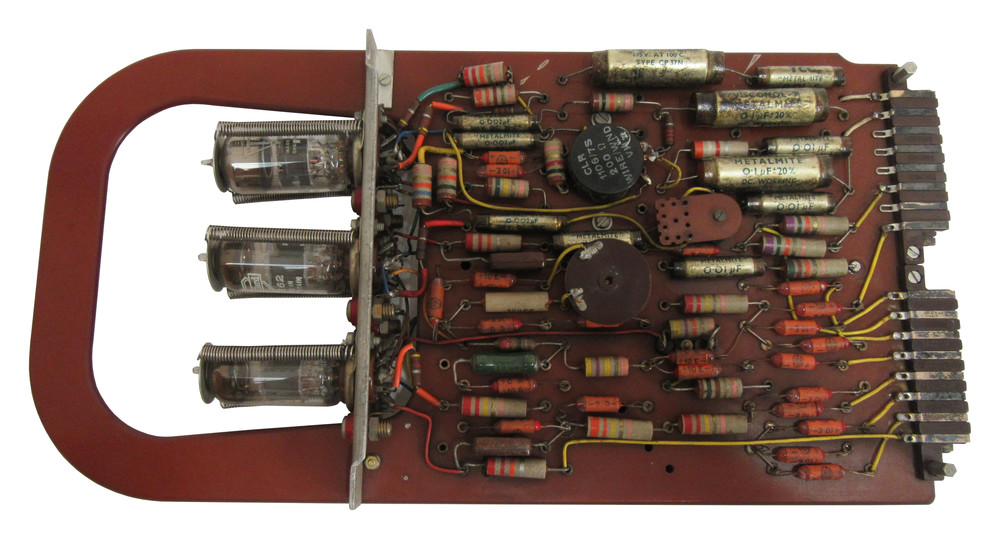Ferranti Pegasus Boards
| Home > Browse Our Collection > Peripherals > Circuit Boards > Ferranti Pegasus Boards |
|
Two plug-in electronic packages from a Ferranti Pegasus computer. A Pegasus typically contained about 450 packages, of 20 different types, but with five types predominating. Pegasus was an early British vacuum tube (valve) computer built by Ferranti, Ltd that pioneered design features to make life easier for both engineers and programmers. It was originally named the Ferranti Package Computer as its hardware design followed that of the Elliott 401 with modular plug-in packages.
It was Ferranti's most popular valve computer with 38 being sold. The first Pegasus was delivered in 1956. Ferranti received funding for the development from the National Research Development Corporation (NRDC). The Pegasus computer was assembled from hundreds of plug-in electronic modules (circuit boards) which contain two or three valves (vacuum tubes – pre-dating the use of transistors or microprocessors). Some of these modules are used as the internal memory of the computer but the main memory is based on magnetised spots on the surface of a rotating drum, similar to a modern day magnetic disc drive. Data input and output is via 5-track punched-paper tape.
Date : 1956Manufacturer : Ferranti Physical Description : x2 boards This exhibit has a reference ID of CH53939. Please quote this reference ID in any communication with the Centre for Computing History. |
|























